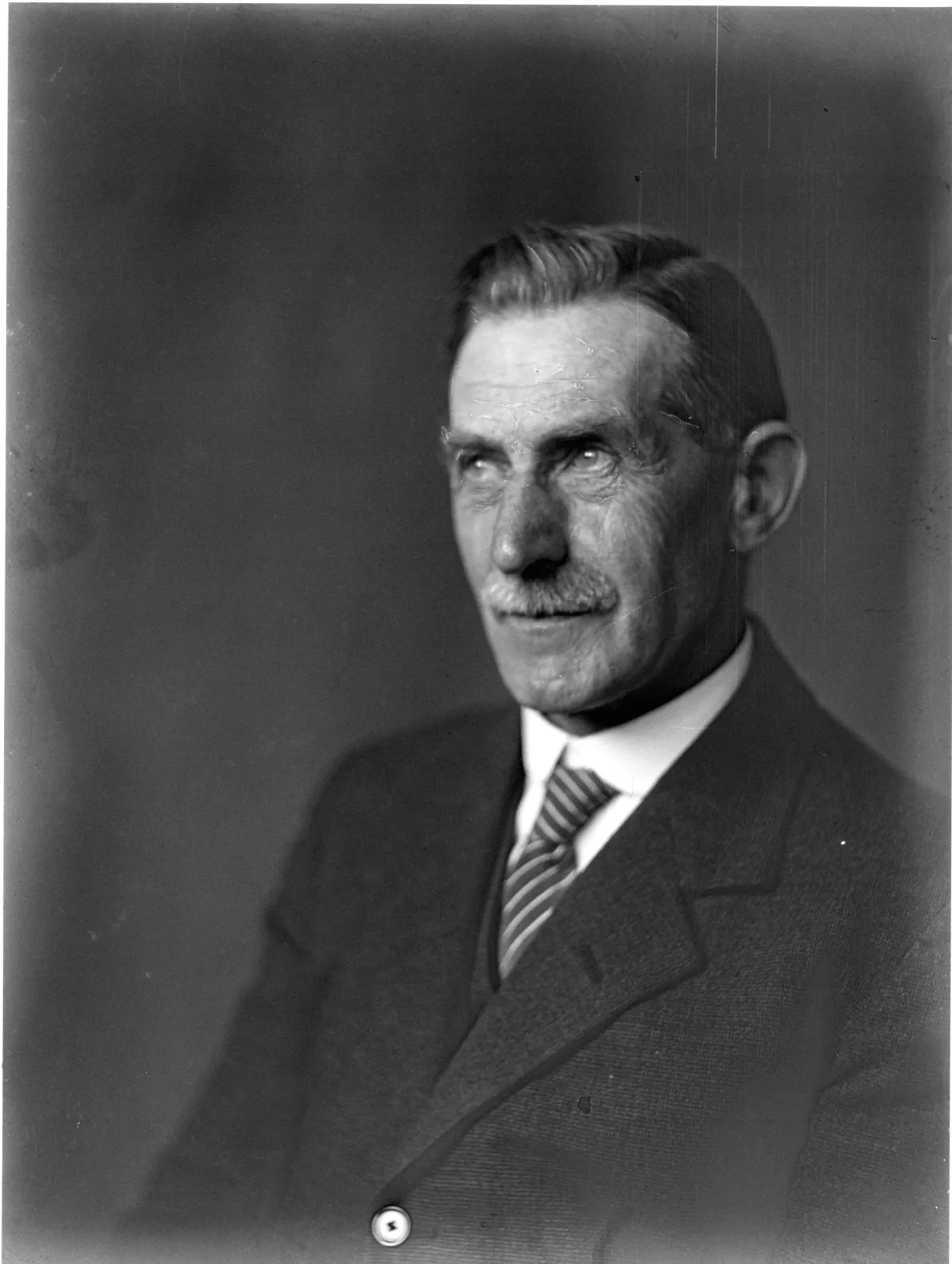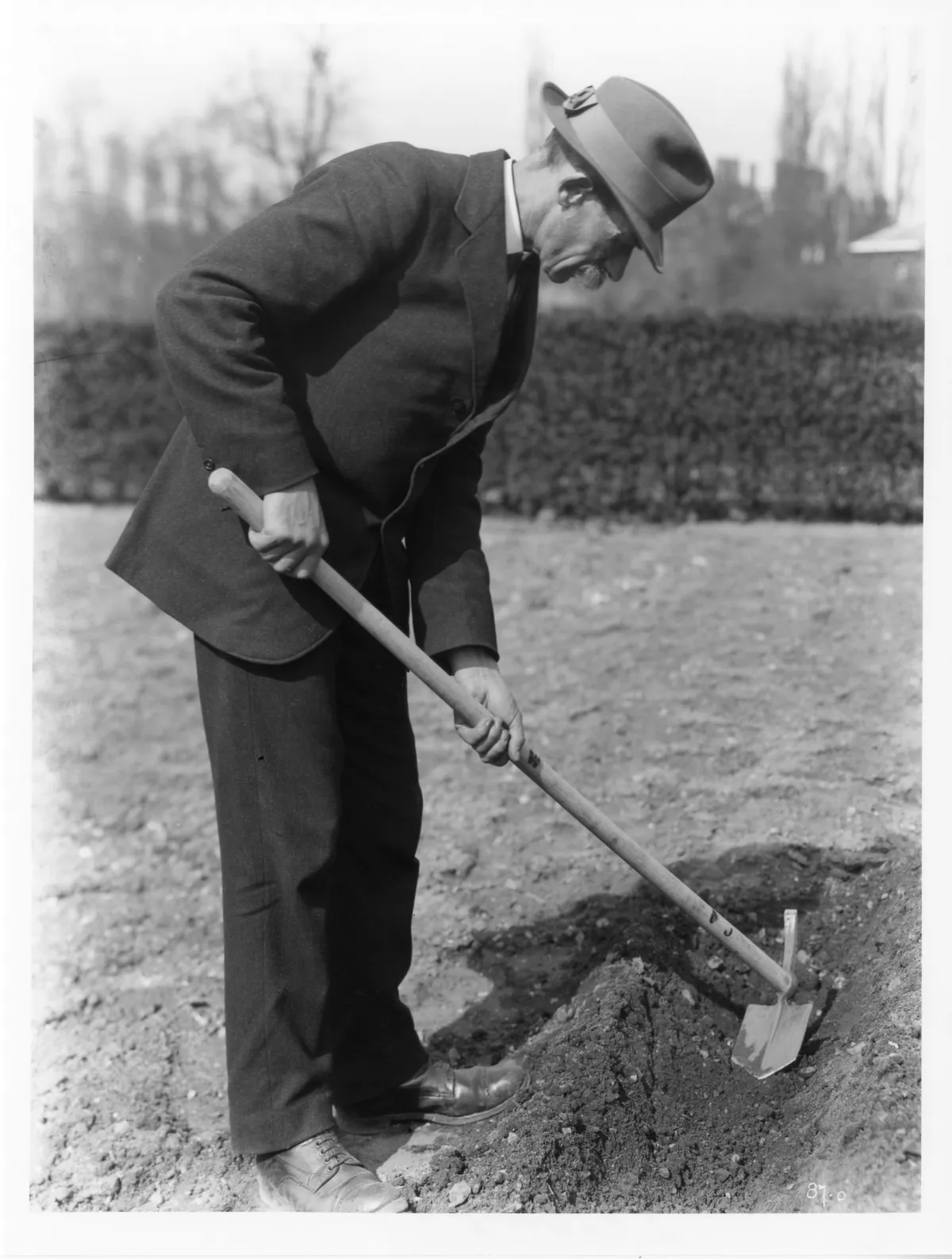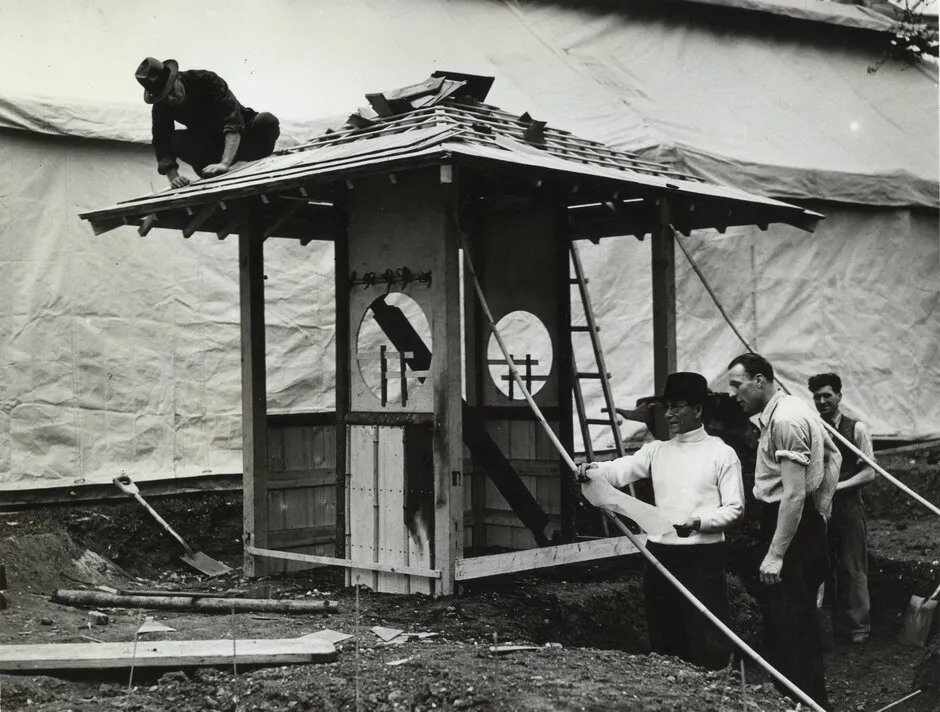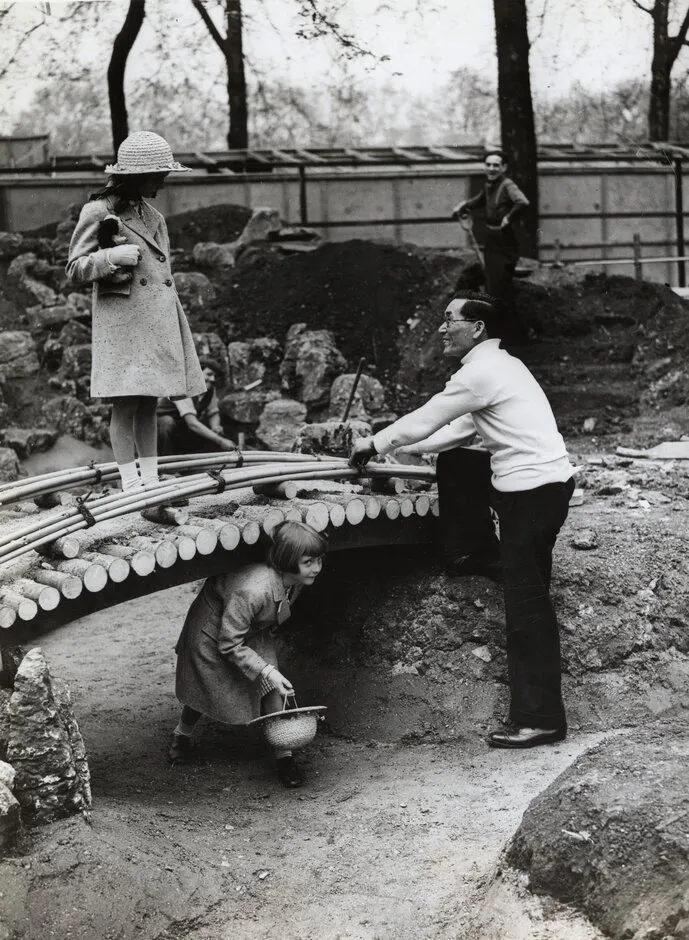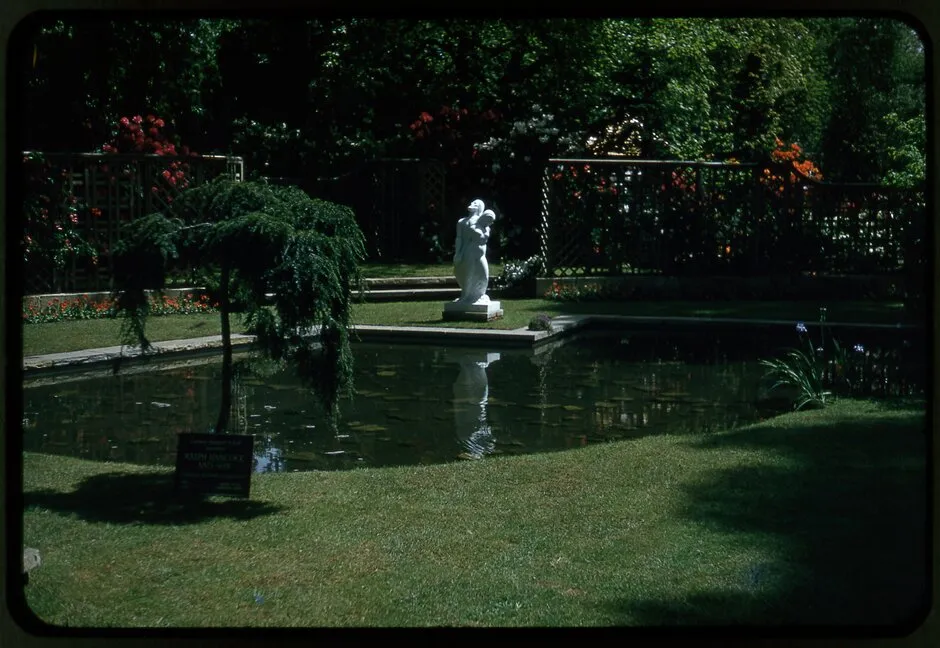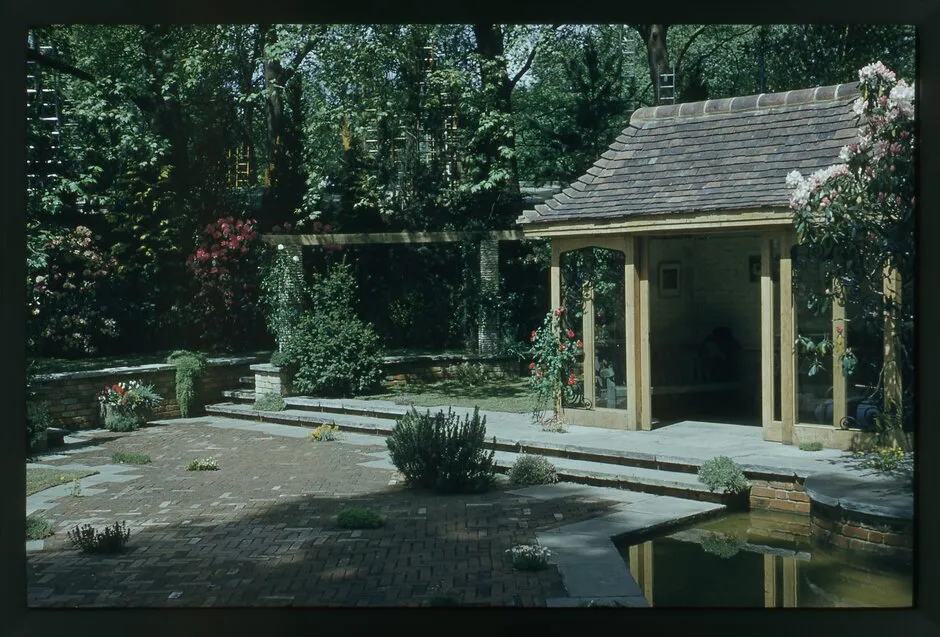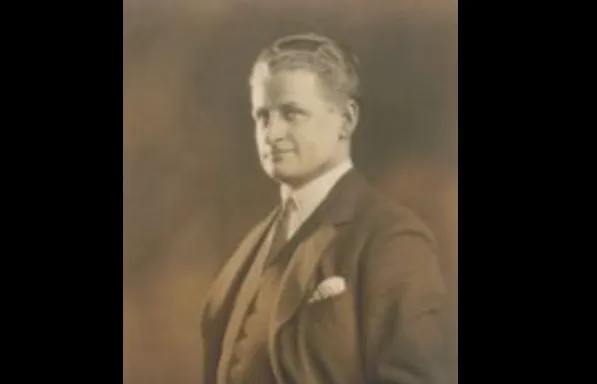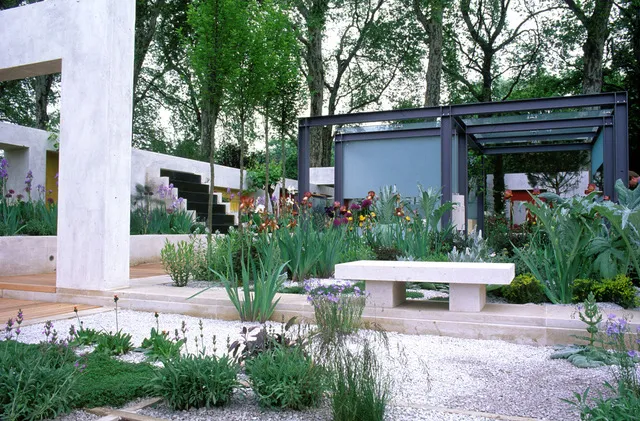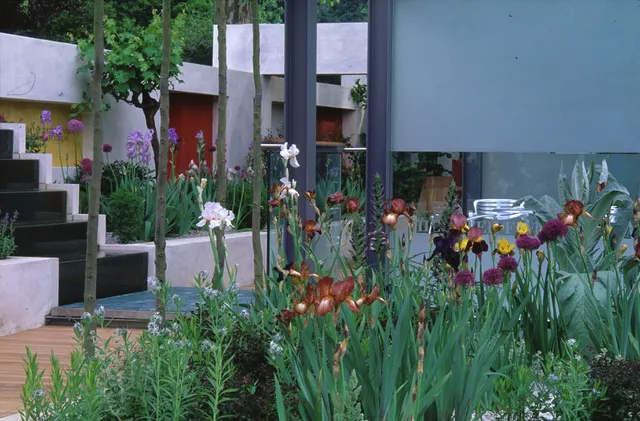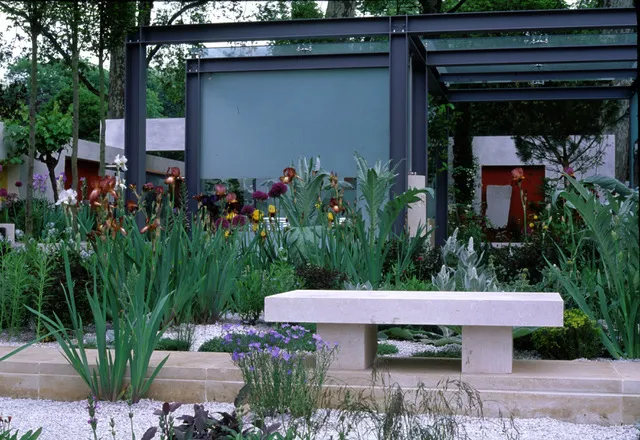The RHS Chelsea Flower Show can make or break a career. More often than not, a diamond emerges from the madness of the world's biggest flower show and a designer gets the chance to make their mark on the world of horticulture. Here are some that have made an impact over the years.
You may also like:
- Tickets, information and what to expect at Chelsea
- Discover all our up-to-the-minute Chelsea news
- Chelsea Flower Show Gardens 2025: discover the full list
- How to design a garden at Chelsea
- Sign up to our Chelsea newsletter
1913: John Wood
The only gold medal awarded to a garden (and there were 17 in total) at the very first Chelsea Flower Show went to John Wood, landscape architect and alpine garden specialist, who was based at Boston Spa in Lincolnshire. Until the 1950s, large-scale rock gardens dominated Chelsea’s show-garden agenda. Several firms — such as Pulham & Co, Backhouse and Ingwersen — created rock gardens at Chelsea over decades, while it was another of Wood’s friendly rivals, Clarence Elliott, who jokingly suggested that his winning garden was so realistic that all it needed was some alpine goats. Wood duly added a pair of goats to his garden in the 1914, which possibly led to the RHS’s ban on ‘livestock’ at the show.
1913- 2019: Hillier’s Nursery
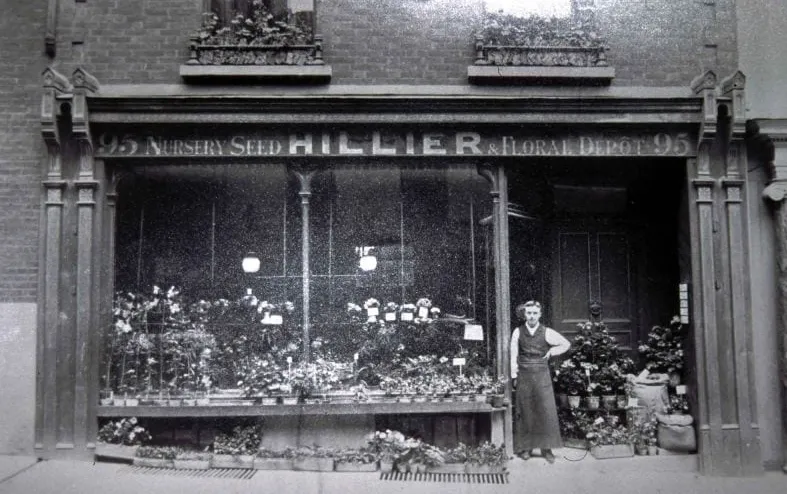
Several nurseries have had long and illustrious careers at Chelsea, where their marquee displays, while not officially ‘show gardens’, have often been masterminded by influential designers. Hillier, with 74 consecutive gold medals until 2019, is emblematic of the phenomenon.
1929: Minerva Hamilton Hoyt
Usually referred to as ‘Mrs Sherman Hoyt’, Minnie Hoyt was an American society figure and pioneering environmental activist who could list among her achievements persuading President Roosevelt to establish Joshua Tree National Park. Representing the Garden Club of America, Hoyt appeared at the 1929 show with a trio of scenic gardens, with painted backdrops, designed to illustrate the natural environment of California, including Death Valley. These were arguably the first Chelsea show gardens, in the modern sense. James Basson’s best-in-show garden of 2017 followed the same principle of replicating a wild environment.
1937: John Coutts
The curator of the Royal Botanic Gardens, Kew, was asked to create a display to celebrate the coronation of George IV. The Empire Exhibit was probably the most ambitious horticultural extravaganza yet attempted at the show. Individual display areas presented the plants of Australia, New Zealand, Canada, Newfoundland, the West Indies, Palestine, South Africa, West and East Africa, Burma, Fiji, the Seychelles, the Falkland Islands and several other territories. These were not ‘show gardens’, exactly, but nor were they purely botanical displays — a very ‘Chelsea’ combo.
1934-1952: Percy Cane
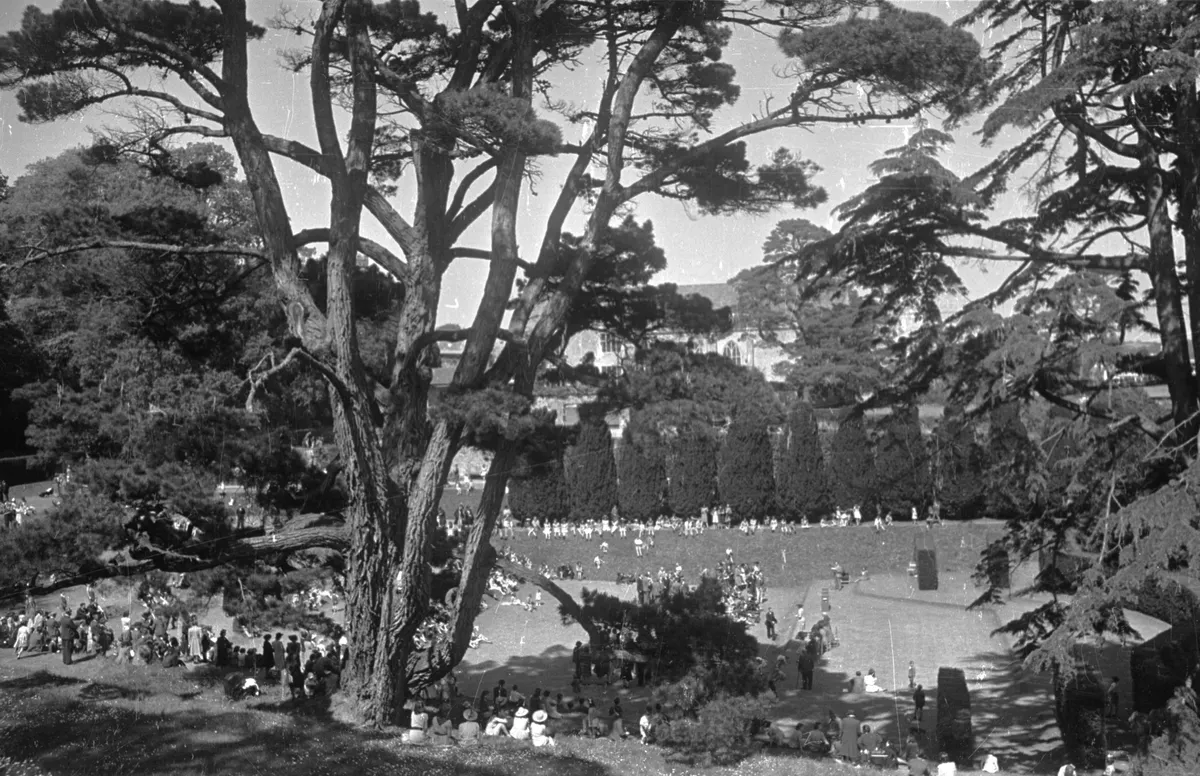
One of the best-known designers of the era, Cane exhibited 11 gardens at the show during this period, winning gold medals for eight of them. In many ways a product of the Arts and Crafts era, Cane’s style was nevertheless contemporary in feel, with a hint of modernism creeping in to features such as generous terraces and shallow flights of steps.
1936-37: Seyemon Kusumoto
Japanese gardens, consistently fascinating to British gardeners, were a feature of the show from its earliest days, usually listed simply as ‘formal gardens’. Kusumoto was a highly successful Japanese designer based in Edgware, north London, who created more than 200 gardens in the UK from the 1920s to the late 1950s.
1936-1947: Ralph Hancock
One of the most original garden designers of his generation, Hancock’s theatrical design sensibility was well-suited to the Chelsea milieu. He won three consecutive gold medals in the 1930s. Hancock had already found fame with a spectacular neo-Baroque roof garden for the Rockefeller Center in New York; back in England, his style was somewhat more traditional, with ‘country gardens’ for Chelsea featuring his signature moon-gate.
1937-1945: Sylvia Crowe
One of the greats of 20th-century landscape design, Crowe was one among several designers who effectively made her name at the Chelsea show. Having trained at the women’s horticultural college at Swanley, Crowe’s first job was with the London nursery Cutbush & Co, which also offered a garden-design service (as did many nurseries at the time). Crowe designed several notable Chelsea gardens; one featured her favourite bluebells in woodland, while more controversial was a modernist summerhouse constructed from concrete.
1947 - 1962: Francis Hanger
The curator of the Royal Horticultural Society’s garden at Wisley created several notable show gardens at Chelsea during the 1950s, many of them featuring rhododendrons and azaleas (he had formerly worked at Exbury Gardens). His 1951 garden celebrating the Festival of Britain was a re-creation of a Himalayan gorge which required 23 lorryloads of plants brought up from RHS Garden Wisley — which was somewhat depleted as a result. He followed this up in 1955 with a giant bog garden. These RHS-sponsored gardens were perhaps the last gasp of ‘Edwardian’ horticultural grandeur at the show.
1956-1970: Graham Stuart Thomas
The great planstman, old-rose specialist and adviser to the National Trust designed garden exhibits for the Chelsea marquee in his capacity as co-director of Sunningdale Nurseries. His highly influential exhibits consisted mainly of the choicest trees, shrubs and the ‘old roses’ with which he was strongly identified. Today the emphasis among designers is much more on perennial plants.
1958: Russell Page
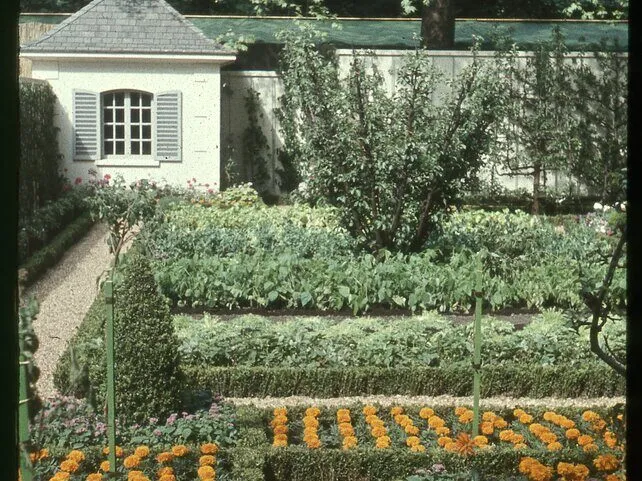
The great French nursery firm of Vilmorin-Andrieux had to be persuaded to make an ornamental vegetable garden or potager the theme for its garden at the 1958 show, and Page was commissioned as the designer. The result, a formal design of raised beds with bright flowers and extravagantly trained espalier fruit trees, was a sensation. Vita Sackville-West hailed it as, ‘one of the prettiest, gayest, and most amusing things ever to be presented at Chelsea’. This was Page’s only Chelsea effort, but if you are only going to do it once ...
1962: John Brookes The pioneer of small-garden modernism, John Brookes made a startling and controversial debut with a garden featuring a geometric grid design, concrete pavers and a modernist pergola. It had been commissioned by the Landscape Institute, and later Brookes worked with the Concrete Association as a sponsor. He continued to exhibit at Chelsea intermittently through the 1970s and 1980s, but his relationship with the conservative RHS was sometimes strained. The white fibreglass chairs designed by Verner Panton for Brookes’s 1972 ‘suburban' show garden were removed by the RHS because they were, ‘too avant-garde to be seen by Her Majesty’, as he recalled. He sneaked the chairs back in, and some in the royal party even tried them out.
1976 - 1987: Beth Chatto
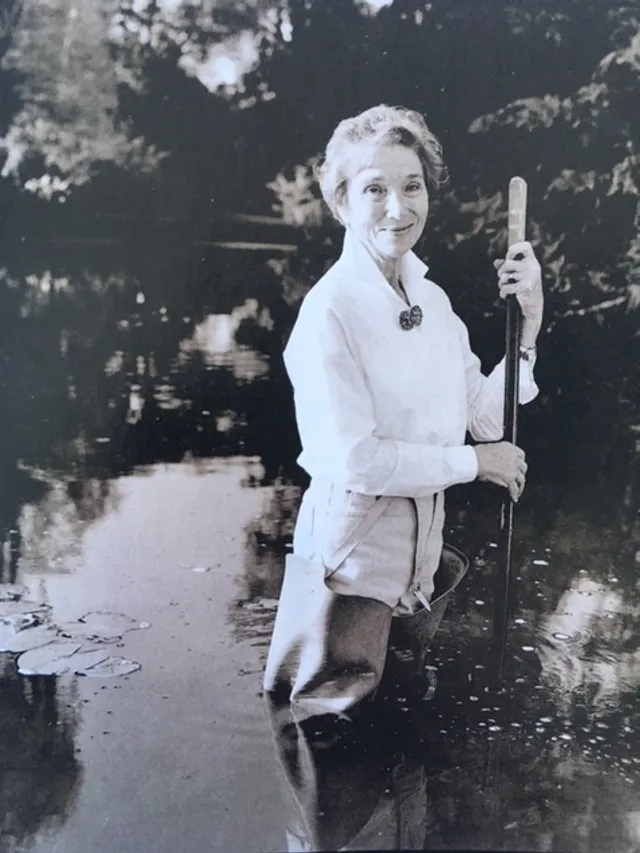
The great plantswoman developed a cult following with plant displays in the marquee which were not ‘show gardens’ but beautiful compositions featuring choice plants from her Essex nursery, 'Beth Chatto's Unusual Plants’. The naturalistic style was at odds with Chelsea’s nursery traditions, but a generation of gardeners (notably Dan Pearson) was enchanted. Chatto's displays, across 11 consecutive years, became one of the main events at the show and are still talked about by keen gardeners, not least for the emphasis on foliage and form as much as flower.
1976 - present day: David Stevens
Designer of understated and elegant formal gardens with a modern feel, Stevens was in 1976 the first garden designer to be mentioned by the RHS by name in its programme. Stevens has made more than a dozen Chelsea show gardens and won the Best in Show award on three occasions. He is known for his books and teaching, which combine practical clarity with design savvy.
1990 - present day: Arabella Lennox-Boyd
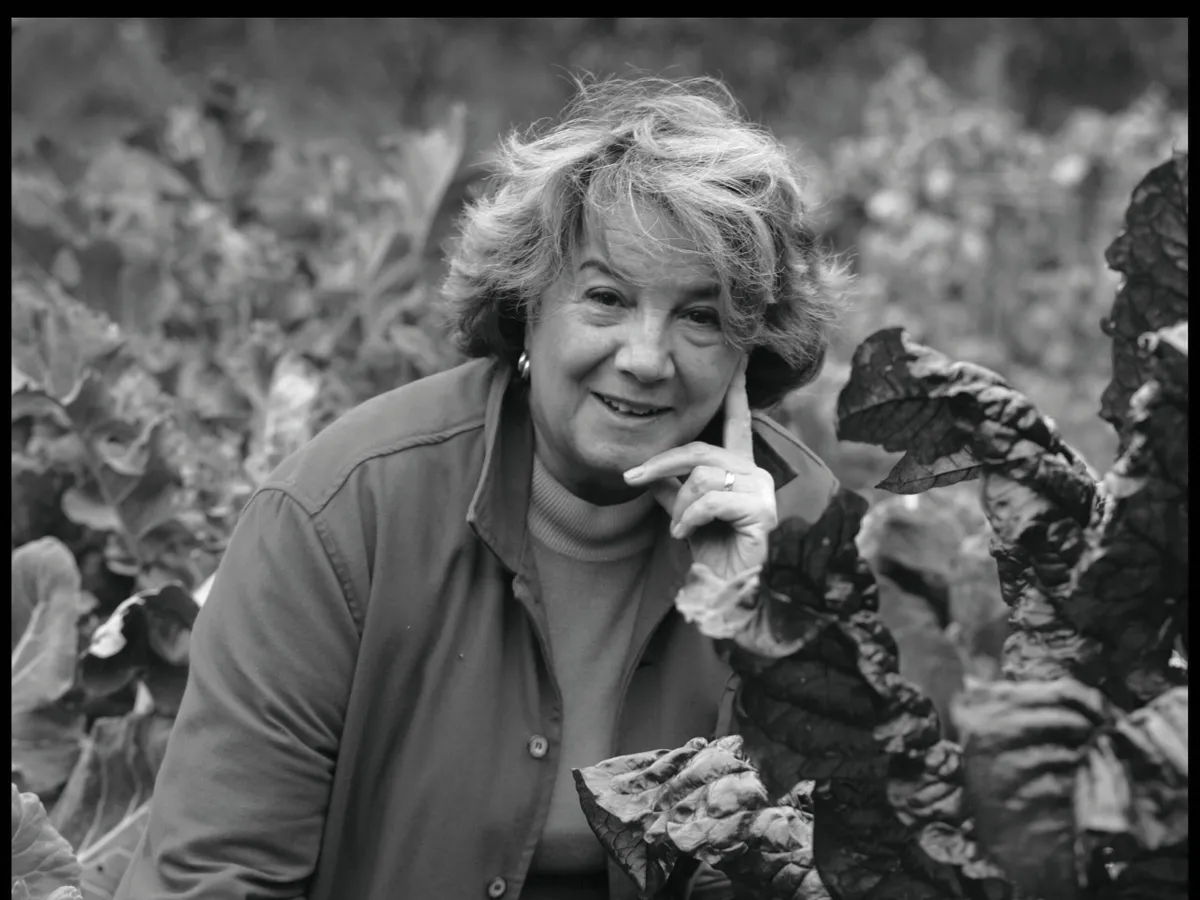
The Italian-English landscape designer exhibited through the 1990s and 2000s, winning six gold medals and the Best in Show award in 1998. Her Chelsea gardens were strongly structured, deploying shrubs and evergreen plants, as well as an overlay of perennial flowers which today seems to be a requirement for successful designs at the show. Belgian designer Jacques Wirtz’s 1998 accusation of plagiarism was not given wide credence among the public or Lennox-Boyd’s contemporaries.
1990-2005: Carol Klein

Latterly better known as a television presenter, Carol Klein first gained a following for her skilfully organised displays of plants in the marquee. In some ways she was continuing in the footsteps of Beth Chatto, since the specimens from her Glebe Cottage Plants concern were always arranged with an artistic eye which placed her well above most of her contemporaries in terms of aesthetics.
1997: Christopher Bradley-Hole
An avowed Modernist, Bradley-Hole has designed six gold-medal-winning gardens at Chelsea, but it was his 1997 offering which was the game-changer. The Latin Garden is generally considered the greatest Chelsea show garden in living memory, since it rehabilitated modernist design in the minds of the public while also exhibiting the cutting-edge of naturalistic planting design (with Thalictrum rochebrunianum, for example, getting a first outing). The design exhibited a harmonious balance of scale, colour, texture and materials which has perhaps never been equalled in the tough Chelsea environment, where even the best designers can struggle to express themselves amid a tangle of regulations and sponsors’ expectations.
2006: Tom Stuart-Smith
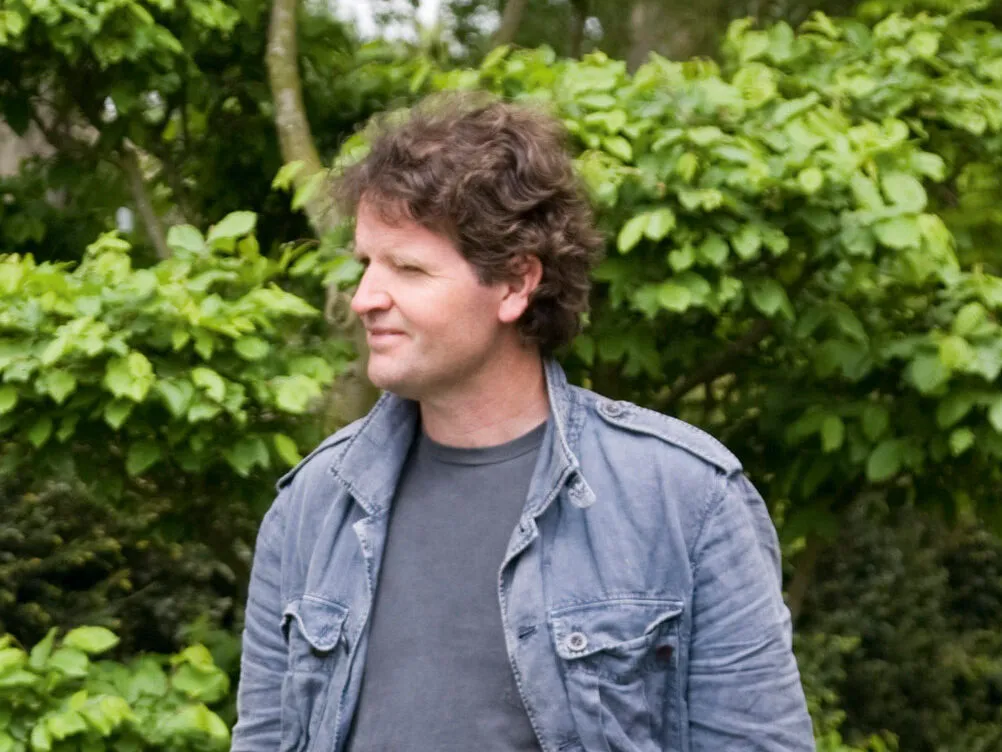
Here is a designer who has had more Chelsea success than many of his contemporaries: nine gold medals since 1991, including three Best in Shows. His designs have been consistently memorable but the garden which is perhaps most talked about still is his 2006 garden for The Daily Telegraph. This featured rusted Corten steel walls and water tanks, with the complementary stems of a hitherto somewhat derided shrub, Viburnum rhytidophyllum, which was rehabilitated as a designer’s plant as a result. After a stint as a judge, Stuart-Smith stepped back from competitive show-garden design but he was back in 2024 with a Gold-medal-winning garden for the National Garden Scheme, sponsored by Project Giving Back, which had a woodland feel. Many of the plants were donated by National Garden Scheme garden owners.
2006 - present day: Cleve West

A designer who often takes risks, Cleve West had an intense run of success at Chelsea, with gold medals in 2006 and 2008, then consecutive Best in Show awards in 2011 and 2012 (the first ever designer to manage the feat), followed by golds in 2014, 2016 and a Gold (after a seven-year gap) in 2023. West’s gardens often feature boldly placed sculptures and unorthodox spatial designs, but his work still manages to convince both crowds and judges in the febrile Chelsea atmosphere. His passionate belief in a vegan lifestyle complements a long-term commitment to a sustainable approach to design. 2023's garden for Centrepoint featured the ruins of a house, alongside rubble, a fallen tree, lots of self seeding plants and weeds.
2015: Dan Pearson

Another designer with a long Chelsea pedigree (back to 1992) and multiple gold medals. But it was a garden sponsored by Laurent-Perrier in 2015 which truly broke the mould. An evocation of a stream in the woodlands above Chatsworth House in Derbyshire, it replicated the planting and rockscape at large scale and in uncanny detail, creating a memorable sense of atmosphere. On the large but difficult ‘Triangle’ plot in the showground, with boundaries on all sides, it also presented multiple perspectives for visitors, securing the Best in Show award to near-unanimous acclaim.
Discover one of Dan's non-Chelsea gardens
2022 Sarah Eberle
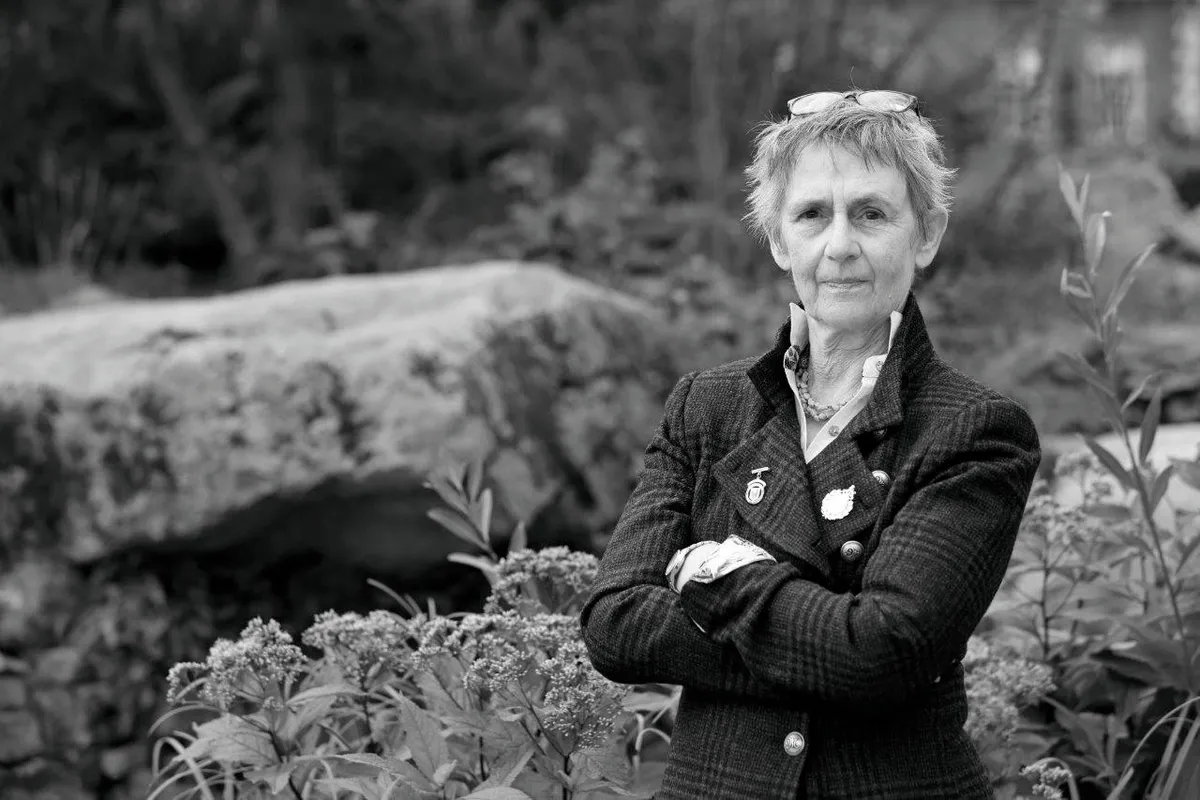
The veteran Chelsea garden designer Sarah Eberle is the most decorated designer in the history of the Chelsea Flower Show - a record she broke in 2016. Her garden in 2007 was one of the more memorable ones, called The Life on Mars garden, which was a 'chill-out space' for astronauts. It was named Best in Show.
Sarah's garden in 2022 was her last at Chelsea, and The Medite Smartply Building the Future garden was centred on a 6m-high, cave-like structure made out of an innovative MDF construction material. It was an incredible space which focused on the idea of sustainable landscapes and buildings and was inspired by vertical rock strata. It had a waterfall and featured many damp-loving, rare and wild flora.
2023 Sarah Price
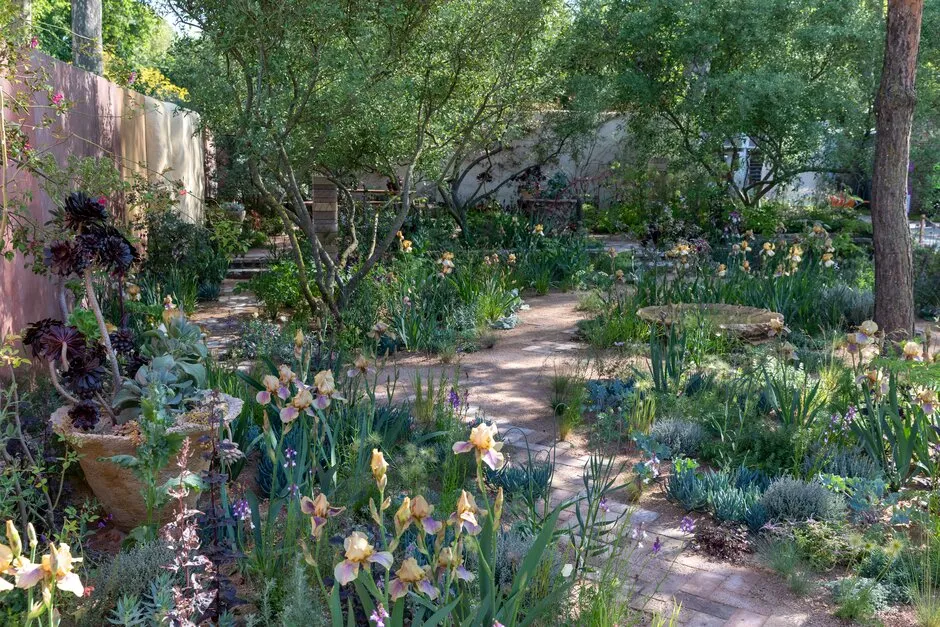
Sarah Price created her first garden at Chelsea in 2012, and won a Gold Medal for her garden for the Daily Telegraph. She won Gold again in 2018, with her garden for M&G Investments. Her 2023 garden, Nurture Landscapes, was inspired by the paintings and gardening talents of Cedric Morris and was a celebration of his exquisite Benton irises, and also of natural materials. Its unusual and muted palette of soft yellow, purple, lilac and pink, and the lime rendered straw-bale walls, live on in the memory of many, and many top designers and pundits were surprised that the garden was not awarded Best in Show.
